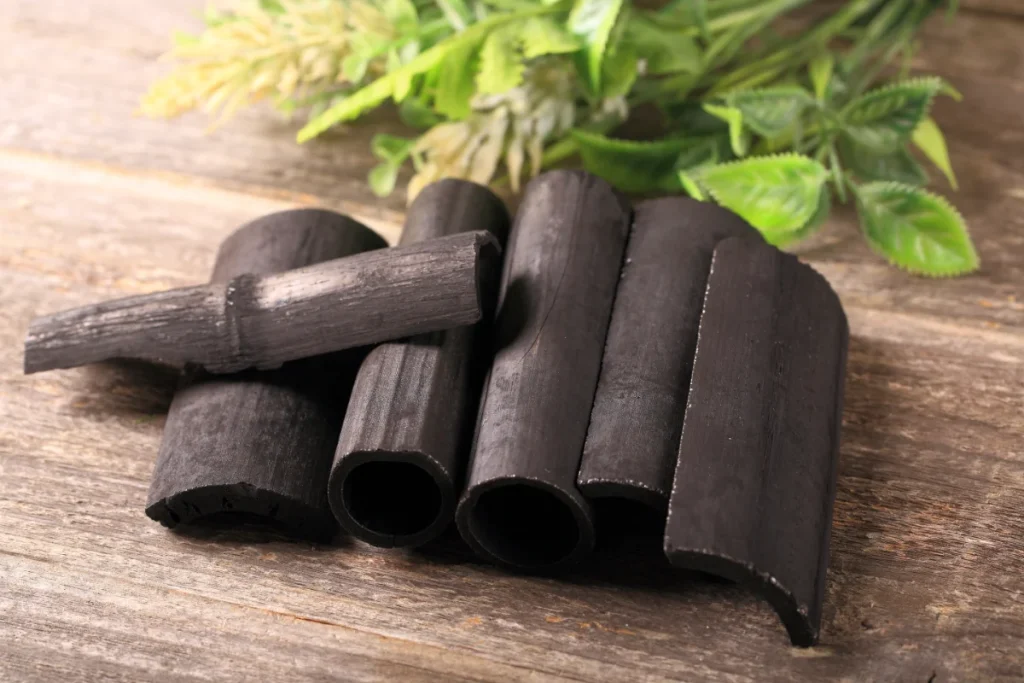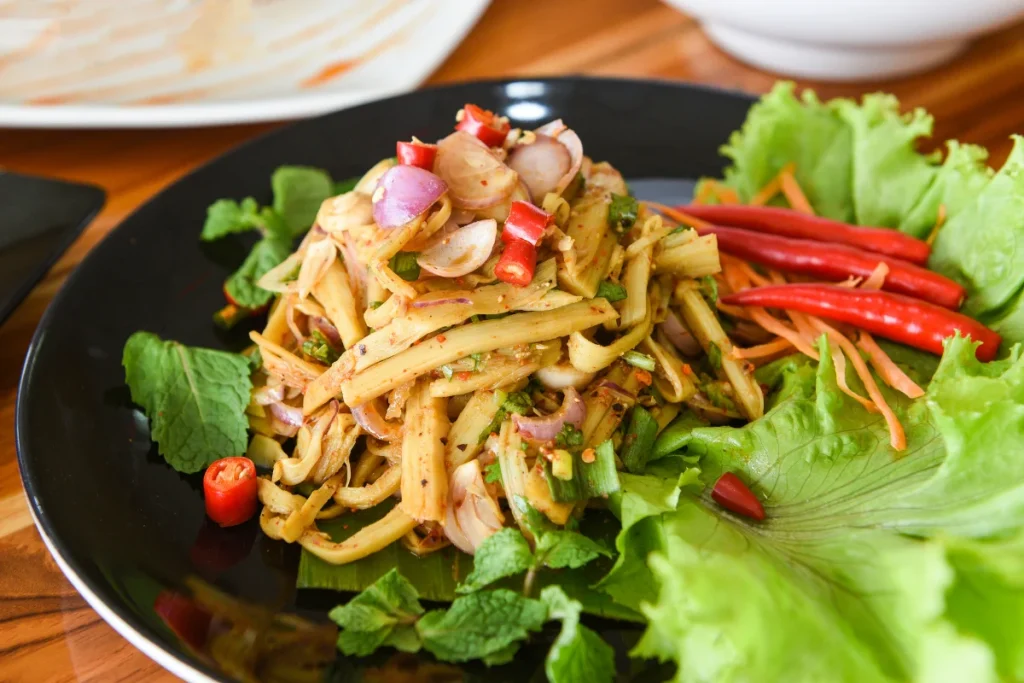
How Can Bamboo Harvesting Preserve Nature’s Balance?
Welcome to the world of bamboo, where nature’s wonder meets human ingenuity. Bamboo, a resilient and versatile plant, has captured the imagination of cultures worldwide. In this article, we will discover the significance of harvesting bamboo and how it contributes to a more eco-friendly and economically viable future.
Benefits of Bamboo Harvesting:
Bamboo harvesting extends far beyond the act of collecting canes; it is a practice intertwined with an array of benefits that touch both the environment and local economies. Let’s uncover the multifaceted advantages of bamboo harvesting:
Economic Advantages
Renewable Resource:
Bamboo is a rapidly renewable resource, with some species maturing in as little as three years. This swift growth rate allows for continuous harvesting and a reliable source of income.
Diverse Applications:
Bamboo’s versatility contributes to various industries, including construction, furniture, and crafts. Its applications create economic opportunities for communities engaged in bamboo cultivation.
Job Creation:
The entire process, from harvesting to manufacturing, generates employment opportunities. This not only sustains local livelihoods but also fosters a sense of community and economic growth.
Environmental Benefits

Carbon Sequestration:
Bamboo is a champion in carbon sequestration, absorbing more carbon dioxide and releasing more oxygen than many other plants. Harvesting bamboo encourages the plant to grow vigorously, enhancing its carbon-absorbing capabilities.
Soil Preservation:
Bamboo’s extensive root system helps prevent soil erosion, making it an excellent choice for slope stabilization. This natural erosion control contributes to the preservation of landscapes and ecosystems.
Biodiversity Support:
Well-managed bamboo groves provide habitats for various species. By cultivating bamboo responsibly, we contribute to the preservation of biodiversity.
How to Harvest Bamboo?
Harvesting bamboo is an art that requires precision and a deep understanding of the plant’s growth cycle. Here are some steps to follow;
Selecting the Right Bamboo:
Before the harvest begins, it’s crucial to identify mature bamboo canes. Look for canes that have reached their full height and have a vibrant, healthy color. Avoid harvesting young shoots, as they may not have developed the strength and durability needed for various applications.
Cutting Techniques:
Effective cutting techniques are at the heart of successful bamboo harvesting. Whether you are a seasoned harvester or a beginner, understanding the nuances of cutting bamboo is essential for a bountiful and sustainable yield. Let’s delve into the key cutting techniques to ensure precision in the bamboo harvesting process.
Use the Right Angle:
When harvesting bamboo, the angle of your cut matters. Aim for a 45-degree angle when making your cut. This angle serves a dual purpose—it promotes water runoff from the cut end, preventing water accumulation that could lead to decay, and it also contributes to the overall aesthetic appeal of the harvested bamboo.
Cutting Close to the Ground:
To encourage the healthy growth of new shoots, it’s crucial to cut bamboo as close to the ground as possible. This practice ensures that the remaining stump doesn’t become a safety hazard and stimulates the emergence of new shoots, continuing the bamboo’s natural growth cycle.
Avoid Splitting:
Bamboo canes have natural nodes along their length, and cutting between these nodes helps prevent splitting. To achieve this, make a clean and swift cut, avoiding hesitation or jagged movements. A well-executed cut between nodes maintains the structural integrity of the bamboo cane. These cutting techniques not only contribute to the overall quality of the harvested bamboo but also play a role in the sustainability of bamboo groves. Precision in cutting reduces waste and ensures that the bamboo continues to thrive, providing a renewable resource for future harvests.
When to Harvest Bamboo

Timing is Everything:
Understanding the timing of bamboo harvesting is essential to ensure the best yield and quality. Different bamboo species have unique growth patterns, and recognizing the signs of maturity is key. Let’s explore the nuances of when to harvest bamboo, categorized by various types.
Running Bamboo: Spring and Early Summer
Running bamboo, known for its aggressive growth, is best harvested during the spring and early summer months. This period marks the peak of its growth cycle when the shoots emerge and reach their maximum height. Harvesting during this phase ensures the bamboo is at its freshest and most pliable state.
Clumping Bamboo: Late Fall to Early Winter
Clumping bamboo, which grows more slowly and forms distinct clumps, is typically harvested during late fall to early winter. At this time, the bamboo has completed its growth for the year, and the culms have matured. Late fall is optimal for harvesting as the bamboo’s energy has shifted from vertical growth to the development of lateral branches.
Giant Bamboo: Late Winter to Early Spring
Giant bamboo, characterized by its impressive height, is best harvested during late winter to early spring. During this period, the bamboo’s growth rate slows, and the culms harden. Harvesting before the new shoots emerge allows for the collection of mature canes with a sturdy and durable quality.
Recognizing the specific timing for each bamboo type is crucial for a successful harvest. Keep in mind that local climate conditions can influence these general guidelines, so observing the bamboo’s growth patterns in your specific region is key. Stay tuned as we dive into the next steps of bamboo harvesting, exploring techniques and safety precautions for a successful and sustainable harvest.
Tools for Bamboo Harvesting
Harvesting bamboo is an art that demands the right tools. These simple yet essential instruments play a pivotal role in the success of the harvesting process. Let’s explore the key tools involved, understanding their functions and how they contribute to a smooth bamboo harvesting experience.
Machetes:
The machete, a versatile cutting tool, is a bamboo harvester’s best friend. Its sharp blade allows for precise cuts, facilitating the easy harvesting of bamboo canes. Whether slicing through thick stalks or trimming branches, the machete is a must-have in the bamboo harvester’s toolkit.
Saws:
Saws come in handy when dealing with larger and tougher bamboo canes. Their serrated edges provide efficient cutting through thick stalks, ensuring a clean and controlled harvest. From hand saws to powered chainsaws, choosing the right saw depends on the size and density of the bamboo being harvested.
Shears:
Shears play a crucial role in the delicate aspects of bamboo harvesting. Ideal for precision trimming and shaping, shears ensure a neat and quality harvest. They come in various sizes and designs, allowing harvesters to finesse their work, especially when dealing with smaller bamboo shoots.
Safety Precautions:
Bamboo harvesting, a rewarding yet intricate endeavor, demands meticulous attention to safety. Ensuring the well-being of the harvester and those in the surrounding environment is paramount. Here are key safety precautions to observe during the bamboo harvesting process:
Wear Protective Gear:
Gloves:
- Purpose: Protect hands from sharp edges and potential splinters.
- Material: Sturdy, well-fitted gloves made of leather or a durable fabric.
Safety Glasses:
- Purpose: Shield eyes from debris during cutting and handling.
- Features: Impact-resistant glasses that cover the eyes completely.
Check for Insects:
- Inspection: Before commencing the harvest, inspect bamboo canes for insects or nests.
- Protection: Wear long sleeves and pants to minimize exposure to potential pests.
Uses of Harvested Bamboo

The versatility of bamboo extends far beyond its growth in nature; it transforms into a valuable resource with a myriad of applications. From construction marvels to intricate crafts, let’s explore the diverse and fascinating uses of harvested bamboo:
- Construction
- Structural Material
- Bamboo’s strength-to-weight ratio rivals that of steel, making it an ideal construction material. It is used to create scaffolding, bridges, and even sustainable alternatives for building homes.
- Flooring and Paneling
- Processed bamboo is often used in flooring and paneling due to its durability and distinctive grain patterns. Bamboo flooring is an eco-friendly choice for those seeking sustainable building materials.
- Crafts and Art
- Basketry and Weaving
- Bamboo’s flexibility makes it a prized material for crafting baskets, mats, and other woven goods. Artisans use various bamboo species to create intricate designs, showcasing the plant’s aesthetic appeal.
- Musical Instruments
- Furniture Production
- Utensils and Household Items
Bamboo’s natural antibacterial properties make it suitable for crafting utensils, cutting boards, and other household items. The material’s lightweight yet sturdy nature enhances its functionality.
Conclusion
As we wrap up our journey through the world of bamboo harvesting, It teaches us the profound lesson that mindful harvesting, coupled with conservation efforts, can create a delicate balance where both people and the environment thrive. As we envision a future where sustainable practices are paramount, let the bamboo stand as a testament to the possibility of coexistence—a reminder that our choices today shape the legacy we leave for generations to come.






